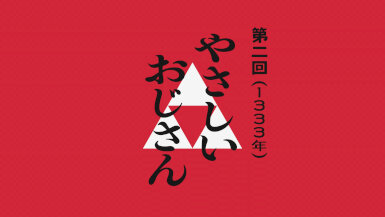Princess Usagi
Curated From randomc.net Check Them Out For More Content.
OP Sequence
OP: 「プランA」 (Plan A) by (DISH//)
Episode 1
Wow. This premiere absolutely took my breath away. I had high hopes already from the preview, but this surpassed even that. Cloverworks pulled out all the stops with some of the most incredibly gorgeous art I’ve seen in a while, and it didn’t let up at any point in the run-time. They not just aired beautiful art- they played with it, using many different shades, colors, angles, and styles, each just as breathtaking as the last. From storybook paintings to loud, bombastic colors, to even a brief black and white stage. One of the aspects that stands out to me about the manga is the mangaka’s exquisite art and in order to really do justice to this series’ charm, anything less than that in this adaptation would not have done. And oh my, did they deliver.
The humor was on beat, loud but fast-paced, sometimes if you blink, you’d miss it (like Yorishige’s lamp shade eboshi hat). Other times it leaned heavily into the anachronisms, like the spoof on the history for kids book series that is popular here. Or just plain bizarre, which we got a very small taste of with Yorishige.
Yorishige (Nakamura Yuuichi) is one really out there character. A lamp switch really is the best metaphor for him. He can be fatherly (I mean, look at the way he carried Tokiyuki after kicking him off the cliff), but also a total nut (which we got plenty taste of that with his shiny mode). Playing him requires the perfect balance of measured craziness. It would be easy to go way over the top, ham-fisting it, but the seiyuu got it just right.
To start things off, I think this calls for a little history 101 to make sense of the hellfire and betrayal we and the cast get thrown into. Basically, at this time, the throne was divided, with 2 emperors, one in the North (backed by Ashikaga Takauji) and one in the South (Emperor Go-Daigo). They were supposed to take turns in alternating between who was in power, but unsurprisingly, that never happened. The Hojo took the reins of power of the shogunate after the first shogun, Minamoto no Yoritomo, passed away. The shoguns were installed young, allowing for the Hojos to exert political control by acting as regents over the shogun. When fending off the Mongol invasions was at its peak (one of the major defense locations is actually practically in my backyard), the Hojo clan took the opportunity to dominate positions of power, which led to dissatisfaction among the other warriors. We then see Ashikaga Takauji betray his lieges, wresting power from the Hojos in the bloody flames that erupt at the end of the episode.
No time is wasted in presenting what could be considered the “thesis” of this series, that it is the victors who write history (a la Ashikaga), but winning alone does not suffice to make a hero. It clearly presents just why sensei’s story is so revolutionary, turning the perspective of might on it’s head in focusing on a boy who “ran away” at a time when honor in death was everything. In focusing only on the results of the conflict, you miss out on something truly special in the story of the other side that didn’t get the results, and it is with pathos, humor, and style that Matsui Sensei examines this in the POV of Hojo Tokiyuki. This is a revolutionary way of looking at history and I am glad to see that the adaptation made sure to put this fact front and center right off the starting gate.
The set up was excellently done as well. It captured the innocence of Hojo Tokiyuki (Asaki Yuikawa), who like any other 8 year old boy, hates his studies and loves playing hide and seek. But he just so happens to have the weight of a crumbling shogunate on his shoulders as the future heir to that position- but in name only as the puppet for those pulling the strings. The script cleverly calls out the deterioration in the Hojo leadership with Tokiyuki’s “It’s in our bloodline to run away from things we don’t like”. Indeed, running away is Tokiyuki’s specialty. The fast paced chase scene was a thrill to watch (I also liked how they snuck what may be a nod to kabuki on the rooftop scene, with the retainer’s gestures and onomatopoeic language “za za za” lightly mirroring similar action scenes in certain kabuki genres). It is on one of these escapades that Tokiyuki runs into Yorishige, a Shinto priest from Shinano province, and his assistant, Shizuku (Yano Hinaki). This is clearly no ordinary priest. His prayers aren’t worth the offering money paid into them, but he does have the gift of foresight. –Or so he says… He comes up with a rather vague prediction for Tokiyuki’s future, but one that carries import nonetheless, hailing him as a future hero. I feel like any time you pull a fortune from a shrine, it’s pretty general stuff that could apply
to anyone, anyway. But then again, I’ve never seen one with a glow up like Yorishige, so this is clearly a special grade fortune.
Tokiyuki’s halcyon days in the Kamakura he loves so much is cut short much too soon with Ashikaga Takauji (Konishi Katsuyuki) rebelling, routing out the Hojos and putting Tokiyuki on the run. It’s pretty understandable for any kid in Tokiyuki’s shoes to not want to face and fight back at the enemies. Yorishige’s response to that is pretty shocking, throwing the kid off a cliff and practically putting a target on his back- but it does show Tokiyuki that he’s still got fight left, effectively talking him out of what would have been “the end”, and escaping together to Suwa. What we have here is a pretty interesting protagonist-antagonist duo, an Ouroboros-like set up of a never-ending cycle- Ashikaga attacks while Tokiyuki evades. Of course that cycle will end, as history shows, but what it doesn’t show in the life of Tokiyuki is what we get here. And what a wild ride it will be.
There were so many points about this premiere that just blew me away, some of which I already covered. One of those highlights was the script. It was elegantly, punchily done. I found the script to be beautiful, actually, often written in period language, as opposed to operating in simplified shounen battle manga style 100% of the time. As a historical junkie and lover of period dramas, I always get giddy when that speech style is carried through in anime form. Both the OP and ED were phenomenal. I was especially fond of the ED, which pays a delightful homage to the anachronistic humor that is part and parcel of this series.
I can’t state enough how over the moon I am with the quality of this premiere. I was already excited for this anime, but now I am doubly more so. 7 days is going to be a long wait.
ED Sequence
ED: 「鎌倉STYLE」 (Kamakura STYLE) by (Botchi Boromaru (ぼっちぼろまる))
End Card
 |

